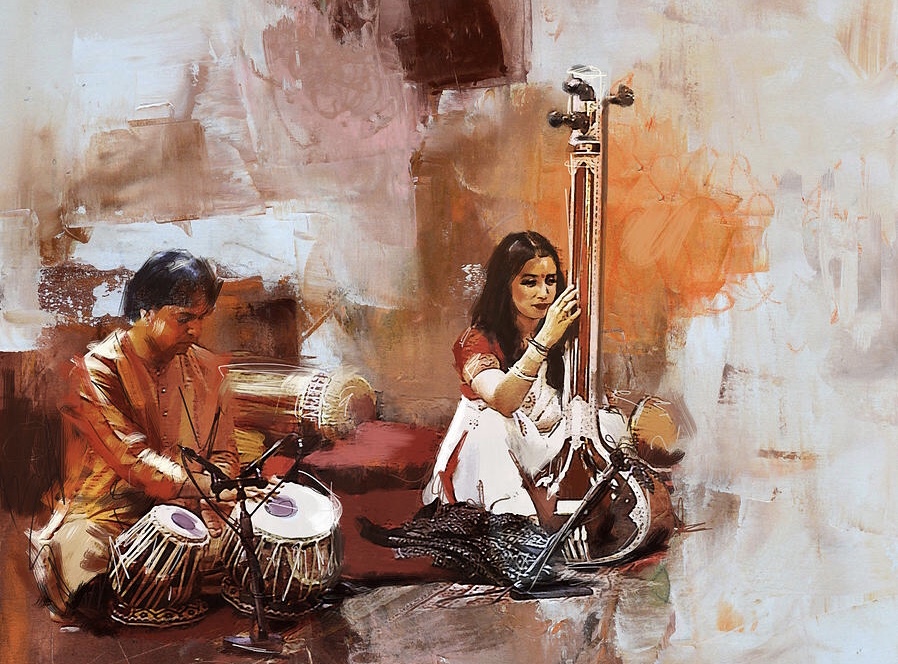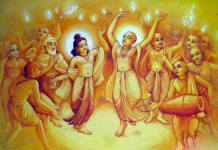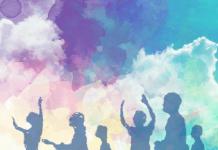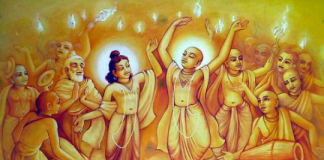Giita, or music, is one of the three practices that form samgiita. And what is the samgiita? A group of artistic practices related to music. In addition to giita, the two other practices are vadya, instrumental music and nrtya, which is dancing.
As we already know, kiirtan is the song that directly reflects Parama Purusa, the song through which the devotee “proclaims the Lord’s glories aloud for all to hear.” And these glories are proclaimed because we need to sing, engage with the melody. and dance for the realization of good sadhana.
When Sadashiva introduced the science of intuitive practice, he had in mind that there must be adjustments in the objective life of those who follow dharma sadhana. In the absence of these adjustments, the mind may become irritated and not allow the spiritual aspirant to concentrate. Sadashiva makes use of vocal music, instrumental music, and dance, arts of the objective world, to organize intuitive practice and adjust it to the mind of each devotee, also bearing in mind that each person tries to please Parama Purusa in a particular style that is unique to them.
Sadashiva assumes that music must be imbued with maximum impact to reach the most subtle layers of the human mind, to reach the ectoplasmic world. For this, he knows that the songs must have rhythm, melody, and meaning to reach the soul.
Meanwhile, playing an instrument should serve to vibrate the mind, and dancing should serve to express inner psychic feelings, which in oriental dance is done through rhythm and mudras, which fully express feelings without the need for words.
In the story we see that great teachers, saints like Maharsi Narada and Mahaprabhu Caetanya Deva encouraged the practice of Gita, vadya and nrtya, as did Baba:
“For objective adjustment in the physical world, Shiva propounded song, dance and instrumental music in such a manner so that it would directly vibrate the ectoplasm so that the ectoplasmic movement converges into one point touching the soul point. That is why great people of all ages have encouraged all three aspects of music.” Excerpt from the book A Few Problems Solved Part 3.
The human being brings the desire to move from a gross state to an increasingly subtle state. The kiirtan makes the music subtle, gives it an idea of bliss and spiritual elevation. The more subtlety a human being attains, the more subtle he wants to be. And that is how aesthetic science arises, from the process of the artistic effort from the gross to the subtle.
Appreciation of subtle aesthetic beauty in singing, melody and dance such as tandava, introduced by Shiva, then lalita lasya, or lalita marmika, developed by Parvatii, his wife, and kaoshikii, created by Baba, are instruments for tuning the mind to this subtler energy. And once this subtler energy is reached, people stop looking for the most rudimentary expressions of life.
So it is very important to practice these three artistic expressions.
In the following issues we will continue this text by speaking in detail of the three dances we use on the path of bliss, in Baba’s philosophy: tandava, lalita marmika and kaoshikii.
*text based on Saḿgiita: Song, Dance and Instrumental Music [a compilation], by Shrii Shrii Anandamurti
By Laksmii (Luciana Lima Lopes)
Translated by Devashish (Donald Acosta)
Image by Maryam Mughal







